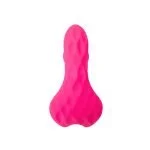This post may contain affiliate links, which means we receive a small commission on any sales. This committee helps Feminist Book Club pay our contributors, so thank you for supporting small independent press!
About this book
Movement: How Women’s Liberation Transformed America, 1963-1973 Clara Bingham’s oral history encapsulates second wave feminism and the contributions of feminists during a major revolutionary shift in public consciousness. The author spent five years researching and writing about this project. Doing this work has allowed her to meet many women (and some men) who have valuable knowledge to share.
This book provides a chronological overview of second wave feminism. Each chapter provides the historical context of the movement and then follows the core: women’s experiences during that period in their own words.
We hear stories from private homes, college campuses, workplaces, the backdrop of planned strikes and marches, podiums and newsrooms. The author profiles women and leaders from a variety of backgrounds, including Shirley Chisholm, Barbara Smith, Florence Kennedy, Eileen Hernandez, Frances Beale, and Muriel ·Fox. This format makes the book feel as if the narrators are talking to each other and to the reader. This connection on the page exemplifies the enduring influence of the oral storytelling tradition and its place in the communities in which it was created.
In a country where reproductive rights, legal protections, and bodily autonomy are increasingly being eliminated and/or threatened, and where the current political climate is entrenched in casual misogyny, we struggle to find answers to our pressing problems. more important than ever Read stories by and about womenbecause history tells us that the solutions we need can almost always be found there.
Clara graciously answered my (many!) questions via email and shared some great insights into the past, present, and future, as well as some great book recommendations!
Author interview
Start with a big question, but a favorite to ask around these parts: What does feminism mean to you?
To me, feminism very simply means the belief that men and women should have equal respect and equal rights under the law.
You write that you began conducting interviews about the movement in 2019 at the home of civil rights and radical feminist activist and journalist Susan Brownmiller. How did you get started there? What is the biggest challenge in finding people to interview?
Before COVID-19 brought the world to a standstill, geography played a big role in who I interviewed as I began my journey. Like Susan Brownmiller, I lived in New York City, and first I interviewed women who also lived in New York, such as Marilyn Webb, Emily Goodman, Margo Jefferson, Nancy Stearns and Barbara Winslow. I also traveled to Boston, where I interviewed some of the founders of Our Bodies: Joan DiZion, Miriam Hawley, Jane Pincus, and Norma Swenson. Also in Boston, I found Jane O’Reilly, who wrote the cover story for the first issue of The New York Times. women’s magazine“A Housewife’s Moment of Truth.” After COVID-19, I moved interviews to Zoom, which was more efficient but less fun. But it makes it easier to reach more people living in other parts of the country.
The biggest challenge is convincing people to trust me and talk to me, so after every interview I ask the interviewee for a list of people I should talk to next, as well as a personal introduction.
Your last book, Witnesses of the Revolution, was an oral history that focused on the Vietnam anti-war movement of the late sixties. You spend a lot of time writing oral histories. In your experience, what is the most challenging aspect of writing an oral history? The most rewarding?
The most challenging thing is asking people to remember the details of life that happened more than 50 years ago! When memories are (understandably) hazy, I try to supplement them with archival material – old interviews they may have done decades ago. (The libraries at Smith and Harvard have a very useful repository of oral history interviews with second-wave feminists, on which I relied; as do the Library of Congress and other archives.)
The most rewarding part of writing an oral history narrative is when I can find several good sources/people who were in the same place at the same time but had different perspectives and experiences – that’s when a chapter can take flight. Oral histories can be vivid rather than obscure. They’re like reading dialogue, but can also be more personal and emotional. Since this sport is very personal (“What is personal is political”) I felt telling its history through a first-person voice was the best way to convey in an emotional and authentic way what it was like to be on the front lines of change.
The accounts in the book are deeply touching, and most of them are very heavy. I imagine this takes an emotional and mental toll at work. How did you balance work and taking care of yourself while writing this book?
The abortion part was certainly the hardest part to hear in the interview and the hardest part to write in the book…and then on June 24, 2022, when the news came out that the Supreme Court was overturning Roe v. Wade, I actually I was writing a difficult abortion chapter and my heart sank. Suddenly, the past became reality, and for the first time in 50 years, the lives of women now in their 80s would resemble the lives of women who lived in states where abortion was banned. It’s devastating. But so many of the women I interviewed had such inspiring and heroic stories that I found myself energized and inspired rather than depressed during much of the writing process.
You mentioned that you were born in the year the book begins. What was it like revisiting your formative years this time from the perspective of an experienced adult?
I was born in 1963 and grew up on New York’s Upper West Side, and I have vivid memories of idolizing Shirley Chisholm and Bella Abzug as a young woman. They were both congressmen from New York, and I had their campaign posters on my bedroom wall. My mother is a freelance photographer who works for village voice In 1972, I followed Chisholm on the campaign trail. So, as an adult, reliving this time of turmoil, change, and excitement has helped me connect many dots from my childhood and also helped me better understand my mother and her generation. .
How does this movement connect to general history of documenting women’s stories?
Women’s stories are often ignored and distorted, The movement seeks to put women’s voices and stories front and center.
You talked about the fact that, for at least a generation, historians have traditionally ignored the important role of women of color in the movement and been slow to include the contributions of BIPOC and LGBTQ+ feminists. In “Movement,” you seek to “partially correct the record” by highlighting the voices of women’s committees, particularly those of black women leaders. How does this speak to the larger issue of history being told primarily from a man’s perspective?
As I read contemporary mainstream media coverage of the women’s movement, I was struck by the level of sexism among (white male) newspaper, magazine, and television reporters of the time. They mocked early feminists and belittled their cause. The media is downright vicious when it comes to LGBTQ+ women (and men too). When it comes to the contributions of women of color, their contributions are almost completely ignored by mainstream media. Over the past two decades or so, women have begun to reclaim our history and correct or fill in the record. sports This is just one part of a new group of books that attempt to tell the story of the second-wave feminism movement more accurately and fairly.
How can we, as feminist readers, engage with histories that have traditionally favored white male voices? How do we prioritize intersectionality?
Look for histories about women written by women. There are many such people out there!
Given the current social and political climate, and the similarities between today and the decade covered by the movement (1963-1973), where can we go from here? Where should we look for hope?
I think there’s a lot of hope, and maybe that’s because I’m writing this the morning after the Harris vs. Trump presidential debate. We have a woman of color running for president who is smarter, more qualified, and a better leader than her older white male opponent. How good is that?
Of course, restoring reproductive rights will be a long, hard fight, and there’s still a lot of work to be done, but I’m confident enough Americans understand this Without reproductive rights, women cannot have equal rightsMy hope is that, with enough organizing, a majority of Americans will go to the polls in November and elect a historically important candidate who can lead this country with dignity and respect.
I’ll end with another one of our favorite questions: What are you reading right now?
I just finished reading Percival Everett’s jamesand found it incredibly brilliant and powerful. before james i read Friday Afternoon ClubGriffin Dunne’s memoir, I loved how intimate and candid it was. Next on my list is Rachel Kushner’s new novel creation lake. I can’t wait.
Many thanks to Clara Bingham for discussing her book with us. You can learn more about her and her work on her website. If you’re interested in more of Clara’s history, you should check out her 2017 book Witnesses of the revolution.


 Anal Beads
Anal Beads Anal Vibrators
Anal Vibrators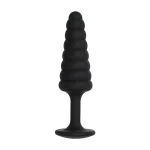 Butt Plugs
Butt Plugs Prostate Massagers
Prostate Massagers
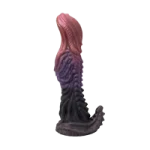 Alien Dildos
Alien Dildos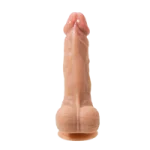 Realistic Dildos
Realistic Dildos
 Kegel Exercisers & Balls
Kegel Exercisers & Balls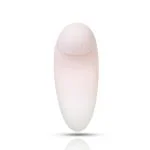 Classic Vibrating Eggs
Classic Vibrating Eggs Remote Vibrating Eggs
Remote Vibrating Eggs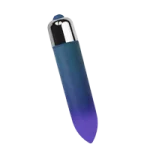 Vibrating Bullets
Vibrating Bullets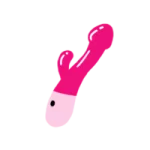
 Bullet Vibrators
Bullet Vibrators Classic Vibrators
Classic Vibrators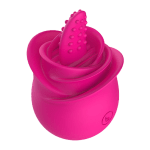 Clitoral Vibrators
Clitoral Vibrators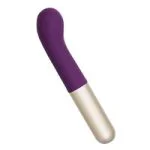 G-Spot Vibrators
G-Spot Vibrators Massage Wand Vibrators
Massage Wand Vibrators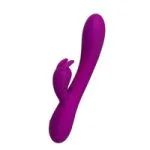 Rabbit Vibrators
Rabbit Vibrators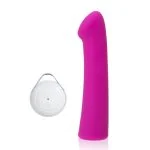 Remote Vibrators
Remote Vibrators
 Pocket Stroker & Pussy Masturbators
Pocket Stroker & Pussy Masturbators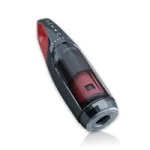 Vibrating Masturbators
Vibrating Masturbators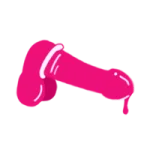
 Cock Rings
Cock Rings Penis Pumps
Penis Pumps
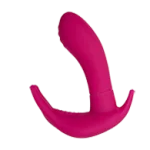 Wearable Vibrators
Wearable Vibrators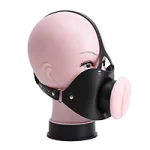 Blindfolds, Masks & Gags
Blindfolds, Masks & Gags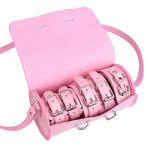 Bondage Kits
Bondage Kits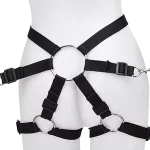 Bondage Wear & Fetish Clothing
Bondage Wear & Fetish Clothing Restraints & Handcuffs
Restraints & Handcuffs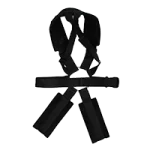 Sex Swings
Sex Swings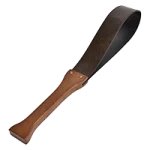 Ticklers, Paddles & Whips
Ticklers, Paddles & Whips




















